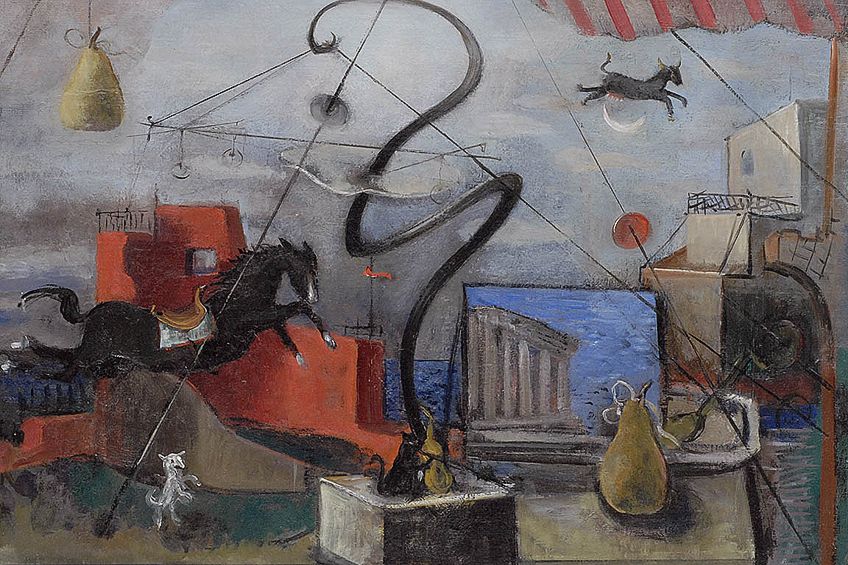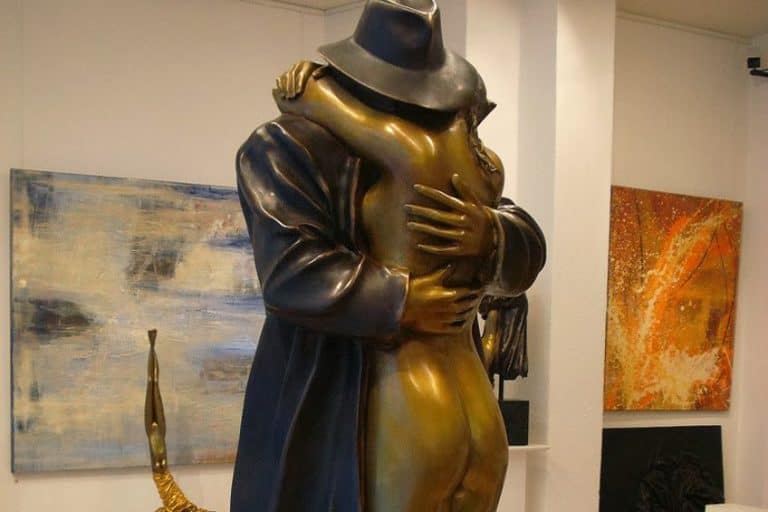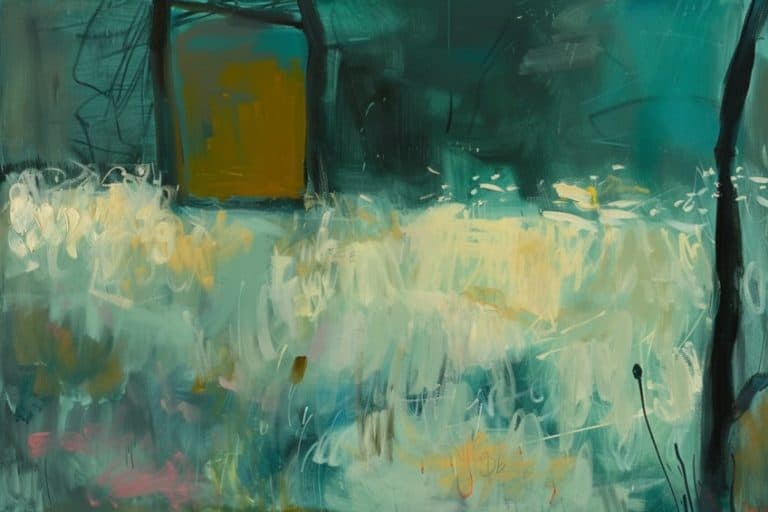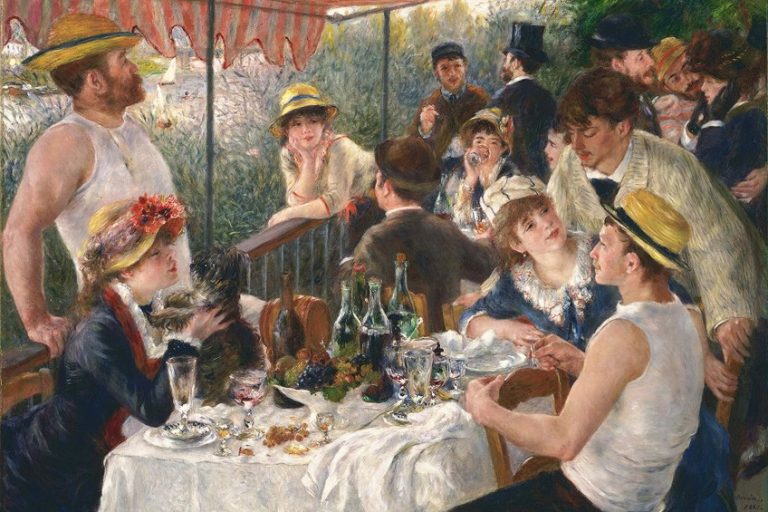Surrealist Artists – A Look at the Most Famous Surrealist Painters
Surrealism originated in the late 1910s during the onset of World War One. The horrors of the war left a deep impression on society, with artists attempting to convey the confusion and anxiety felt within the artworks they were creating. Originally seen as only a literary movement, Surrealism became known as a predominantly visual art movement in 1924.
A Brief History of the Surrealism Movement
The Surrealist period has produced some of the most prominent and widely regarded paintings of the 20th century, with the artists in question going on to become notable pioneers within art history. Initially starting out as only a literary movement, the Surrealist movement began to include visual art after French writer André Breton wrote his seminal Surrealist Manifesto in 1924.
Surrealism developed out of the prior Dada movement, which existed as an anti-art movement that intentionally produced artworks that defied reason. Due to this progressive movement, experimentations with the avant-garde became commonplace in artistic society. Surrealist artists were very enthusiastic about the potential impact that their art could have on demobilizing powerful forces within society, as the impact that World War One left on society was deeply felt.
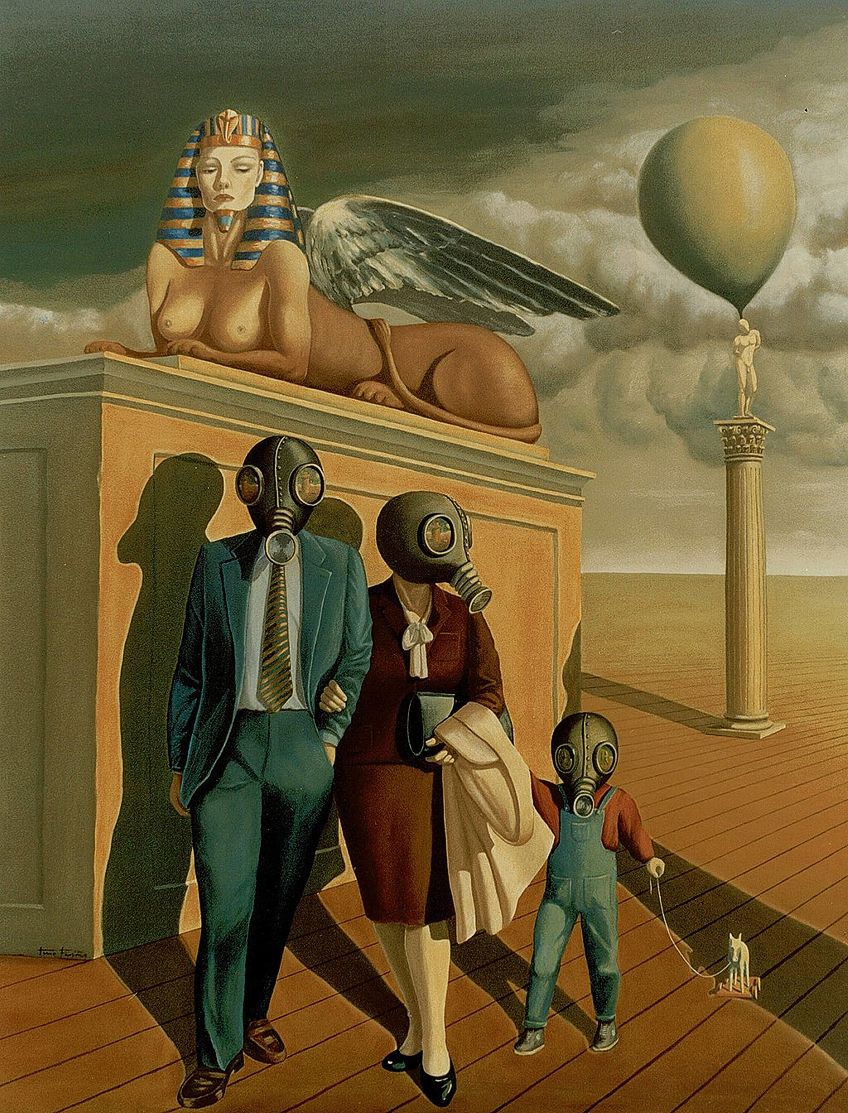
Key Characteristics of Surrealism
The main principle of Surrealism was the eagerness to set free the unconscious mind as a medium with which to examine hidden aspects of the imagination. In doing this, artists were able to offer a subjective and deeper form of truth in their paintings. The artworks created during this period had a persistently popular appeal, with viewers immediately being drawn to the creative and inventive qualities that were displayed in the paintings.
Surrealism was heavily guided by Sigmund Freud’s psychoanalytic theory. Artists aimed to channel their unconscious so they could unlock their inner creativity, imagination, desires, and dreams. Psychoanalysis stated that one’s rational mind suppressed the power of expression, with Surreal artists working to bypass logic and rationality. This was done in a bid to create artworks that emphasized the importance of expression through dreams and the unconscious mind.
The power of Surrealism within visual arts allowed artists to unleash the power of their subconscious mind in order to create artworks of absurd imagery, that were both somewhat amusing and menacing at the same time. This allowed Surrealism artists to create types of contradictions within their paintings that were not previously seen in the art world. What made the movement so revolutionary was that it was not limited to any specific medium or style, rather, it spanned all disciplines that were able to manifest the eerie side of reality.
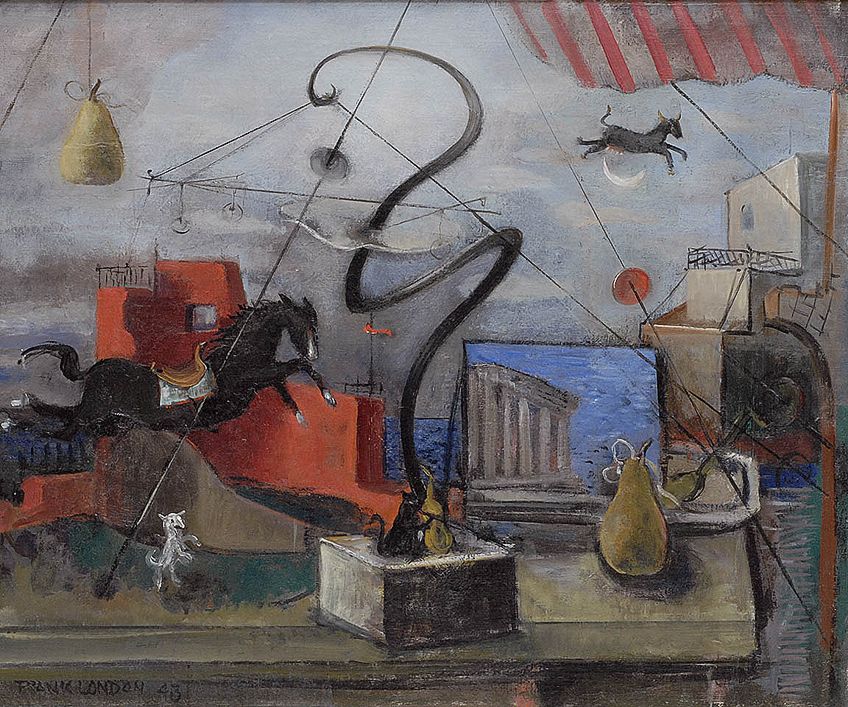
Our Top Ten Most Famous Surrealist Artists
Due to the long time span of the Surrealist movement, many noteworthy artists exist. However, when looking through the list of those who created artworks that were widely known within Surrealism, a few artists manage to stand out significantly. Explored below is our list of the top ten most notable Surrealist artists who helped to define the movement into what it is known as today.
Pablo Picasso (1881 – 1973)
Unlike other artists who practiced solely within the Surrealist movement, Spanish artist Pablo Picasso was known as both a Cubist and Surrealist. Picasso was a revolutionary experimenter and was constantly in search of new visual vocabularies to portray scenes in different styles. Due to this, he cannot solely be considered a Surreal artist, however, his involvement within the movement is recognized as significant. Some of Picasso’s most well-known Surrealist paintings include The Sculptor (1931), Woman with Flower (1932), and Guernica (1937).

Born in Málaga, Spain, Picasso worked in various roles within the artistic community. He experimented with sculpture, printmaking, ceramics, and theatre designer in addition to being seen as a painter, which was his predominant style of choice.
Picasso is considered to be one of the most influential artists of the 20th century, as he is best known for helping start the Cubist movement, which is where a lot of his artworks came from. In addition to this, Picasso also created the constructed sculpture, co-invented the style of collage, and is highly regarded for his involvement in a variety of artistic styles that he helped develop.
It was said that Picasso did not actively attempt to join the Surrealist movement, but rather that its pioneers began including him within their ranks due to the art he was producing at the time.
After the upheaval of World War One, Picasso began to produce work in a Neoclassic style, until that period started to give way to the Surrealist movement. From 1925, Picasso started experimenting with the style of Surrealism, with his artworks frequently characterized by dreamy representations of figures with haphazard facial features and deformed bodies. He also made use of unnatural colors which were often vivid and clashing, which added to the Surreal quality within these artworks,
Within his more Surreal paintings, Picasso employed a distorted sense of perspective and a sharp distinction between organic and geometric forms. Despite making use of some elements of Surrealism, Picasso was never fully considered to be a Surrealist painter. Rather, it was said that his paintings made a great contribution to this movement and were considered to be related to Surrealism due to the imaginative and provocative qualities that were present.

Max Ernst (1891 – 1976)
German painter Max Ernst was first an important member of the Dada movement before he began to experiment with Surrealism. Said to paint from his inner psyche, Ernst focused on creating shocking and dreamlike scenes that mocked social convention. His paintings became known for his investigation of illusion and the irrational, which made him a key member in the application of Automatism. Some of his most well-known Surrealist works include The Elephant Celebes (1921) and The Barbarians (1937).
Despite Ernst having had no formal art training, his involvement within both Dadaism and Surrealism stand testament to the fact that he was a phenomenal artist. His influential creativity was further proved in his development of a technique he called “frottage.” This comprised of positioning paper on rough surfaces before rubbing a pencil over it to copy the outline and contours of the surface. This technique can be seen in a few of his paintings, such as on the bodies of the bird-like figures within The Barbarians.
Due to the consequences left by the Great War in society, as well as the development of the Second World War, Ernst saw the modern world as an irrational place and made this thought the basis of his paintings. Ernst was one of the first artists to make use of Sigmund Freud’s psychoanalytic dream theories, as he liberally painted from his inner mind to find the root of his creativity in order to release his cardinal emotions.
Thus, Ernst’s work proved to be incredibly influential for future generations of artists, as he freely explored the idea of the unconscious mind with the common themes of dream imagery within his paintings. His works often made use of extensive experimentation to make social comments on the state of the world.
Joan Miró (1893 – 1983)
Another influential Spanish artist was Joan Miró, whose artworks fell predominantly in the Surrealist movement. However, Miró also experimented with the characteristics of Fauvism and Expressionism, with a slight overlap sometimes presenting itself within his paintings. Miró’s most notable Surreal artworks include The Hunter (Catalan Landscape) (1923 – 1924), The Tilled Field (1924), and The Harlequin’s Carnival (1925).

After playing around with certain elements, Miró formally joined the Surrealist movement in 1924 and moved to Paris, where he began to share a studio with fellow artists André Mason and Max Ernst. Miró was known to be a very avant-garde Surrealist painter, as demonstrated by his excessive use of bright color, the countless geometric shapes, and the variety of different perspectives within his artworks.
These elements became standard styles in his countless paintings, as Miró combined and contrasted them in various ways to create simplified yet evocative abstract pieces. Miró was also known for his fascination with the idea of the subconscious. He challenged this interest through the creation of childlike and naïve objects in his paintings, as he believed that this was the only route to make sense of the obscured truth of the subconscious mind.
A truly puzzling figure, who introduced his own profoundly personal visual vocabulary of abstracted and playful forms in his paintings, Miró’s work has often been interpreted to be the epitome of Surrealism. Today, there are two museums dedicated to his work, one in Barcelona called Fundació Joan Miró, and the other called Fundació Pilar I Joan Miró in Mallorca.

André Masson (1896 – 1987)
One of the earliest Surrealist painters was French artist André Masson, who was an enthusiastic employer of the Surrealist technique known as automatic drawing. Masson created art that resisted any form of classification due to the stylistic transitions he included in his paintings. Some of his most famous Surreal paintings include Automatic Drawing (1924), Battle of Fishes (1926), and Gradiva (1939).
Through the exploration of automatic drawing, Masson learned to allow his hand to move freely across a canvas without a predetermined plan in mind. This technique expressed the creative force that was present in one’s unconscious mind, which led Masson to work under strict conditions. He would often paint for extended periods of time, without any food or water, and was frequently under the influence of drugs.
Masson believed that this hallucinatory state forced him into a decreased state of consciousness that was free from any form of rational control.
Experiencing the violence and chaos of World War One left a huge impact on Masson, who began to incorporate cruel depictions of disembodied figures in his works to highlight the brutality that he saw. Through these bizarre techniques, Masson’s artworks became well-known for their portrayal of vicious confrontations and peculiar combats.
Masson relocated to America during the outbreak of World War Two, where his artworks began to have a significant impact on the New York School. Thus, Masson’s influential paintings have often been credited as the bridge that existed between Surrealism and Abstract Expressionism, which inspired other artists to begin exploring within the new period of art.
René Magritte (1898 – 1967)
Possibly one of the most easily recognizable and famous Surrealists was Belgian artist René Magritte. He achieved great critical acclaim for his idiosyncratic approach to Surrealism, as a certain type of eccentricity was visible within the majority of his artworks. Magritte’s most notable Surrealist paintings, which are still easily identified today, include The Treachery of Images (1929), Golconda (1953), and The Son of Man (1964).
Once arriving within the Surrealist movement, Magritte’s iconic style never once veered off course. His paintings were generally focused on a familiar arrangement of objects in precisely defined and often strange settings. These objects included the commonly depicted apples, pipes, and bowler hats, which Magritte would set against a backdrop that was day and night at the same time. The men in the bowler hats, a favored symbol of Magritte’s that were frequently included in his works, were also said to be interpreted as self-portraits of the artist.

Magritte’s work was often text-based and highly intellectual, with the interactions he created between the semiotic deviations of an object’s representation and its essence usually evoking mystery and curiosity. The Treachery of Images exists as a prime example of this slippage between meaning and representation, as Magritte portrayed a pipe with a slogan that simply read “This is not a pipe.”
The illustrative nature of Magritte’s paintings often led to a powerful paradox being created. His paintings were regarded as beautiful due to their lucidity and simplicity but also went on to provoke disturbing and shocking thoughts. Thus, Magritte’s works were described as clear images that attempted to hide nothing but elicit mystery at the same time.
Yves Tanguy (1900 – 1955)
Considered one of the quintessential Surrealist painters, French artist Yves Tanguy was an influential presence within Surrealism. A self-taught but incredibly skilled painter, Tanguy was best-known for his deformed rocks and molten surfaces in his paintings that effortlessly lent themselves to the Surrealist aesthetic. His artworks were often mistaken for Salvador Dalí’s, demonstrating his talent and how well they fit into the Surrealist mold. His most iconic artworks include Mama, Papa is Wounded (1927), and Indefinite Divisibility (1942).
Tanguy made use of an incredibly personal type of symbolism within his paintings, which were said to mirror his interests in childhood memory, hallucinations, dreams, and psychotic episodes. As a lover of nature, Tanguy often depicted abstracted landscapes, which made up his most well-known artworks. In these environments, which were unclear and pastel-colored, Tanguy would portray biomorphic and rock-like configurations, as well as shifting and seemingly liquefied surfaces that seemed to resemble a cosmic settlement.
Creating a balance between realism and fantasy, his landscapes were often distinguished by a hallucinatory effect, as Tanguy was known to frequently explore dreams and the unconscious mind. Tanguy depicted the mind and its contents with such lifelike precision, to the point where his paintings evoked a range of connections as they were able to engage with viewer’s own imaginations and emotions. Painting more clearly than any artist that came before him, Tanguy was able to precisely imagine and depict the unconscious as a place.
His paintings were considered to be so intriguingly graphic that psychiatrist and psychoanalyst Carl Jung used Tanguy’s canvases to illustrate his idea of the collective unconscious. Due to the prominence of Tanguy, it was as if his influential artworks knew no bounds. However, he was also said to embody the qualities that Surrealism artists were associated with, as he displayed incredibly eccentric behavioral tendencies.
Salvador Dalí (1904 – 1989)
Another of the most easily identified artists within Surrealism was Spanish artist Salvador Dalí. Known for his incredible renderings of dreams and hallucinations in his paintings, Dalí was one of the most influential artists in the 20th century.
When considering his Surrealist artworks, his most iconic paintings include The Great Masturbator (1929), The Persistence of Memory (1931), and Dream Caused by the Flight of a Bee Around a Pomegranate a Second Before Awakening (1944). Dalí only became fully involved within Surrealism towards the end of the 1920s, when he created the most important artwork of the entire movement, The Persistence of Memory.
After becoming familiar with the theories of Sigmund Freud around sexuality and the subconscious, Dalí began to implement these ideas into his works.
Known for his flamboyant personality and technical skill, Dalí aimed to create a type of visual language within his artworks that could accurately depict his dreams and hallucinations, as well as his obsession with eroticism, death, and decay. These concepts reflected a synthesis with Freud’s psychoanalytic theory, as Dalí drew on repressed childhood memories to create artworks that were full of fetishes, religious symbols, and animal images.
In order to create these artworks that were able to render his dreamlike scenes, Dalí would tap into a self-induced hallucinatory state which he described as “critical paranoia”, in order to depict the inner workings of his mind. Due to the eccentric and outlandish artworks that he created, Dalí went on to reach tremendous fame during his lifetime, with this fame still being seen today.
Despite his prominence, Dalí was banished from the Surrealist group in 1934 for his conservative political views. This did not seem to matter, as he was and still is the most associated artist with this movement. His depiction of melting clocks in The Persistence of Memory is considered to be the trademark of Surrealism, as they have gone on to be one of the most famously reproduced images of all time.
Frida Kahlo (1907 – 1954)
One of the most influential women within the Surrealist movement was Mexican artist Frida Kahlo. Primarily known for her many self-portraits, Kahlo never considered herself to be a Surrealist painter, as she stated that she was simply painting her own reality as opposed to dreams. Out of her many paintings, her most significant Surrealist artworks include Henry Ford Hospital (1932) and The Wounded Deer (1946).
Kahlo’s personal narrative was deeply influential in her artworks, as many of the themes explored in her paintings were about her difficult personal life, her relationship with the revolutionary Diego Riviera, and her constant illness.
This incredibly personal subject material made her stand out from other Surrealist artists, as she depicted aspects of her reality rather than some dreamlike hallucinations.
Using motifs from her Mexican culture, Kahlo typically rendered her images about personal suffering in a folkish and naïve style, which added to the mythical and surreal nature of her works. Thus, despite approaching the Surrealist movement from different geographical and psychological angles, Kahlo’s contribution to the movement remained invaluable.
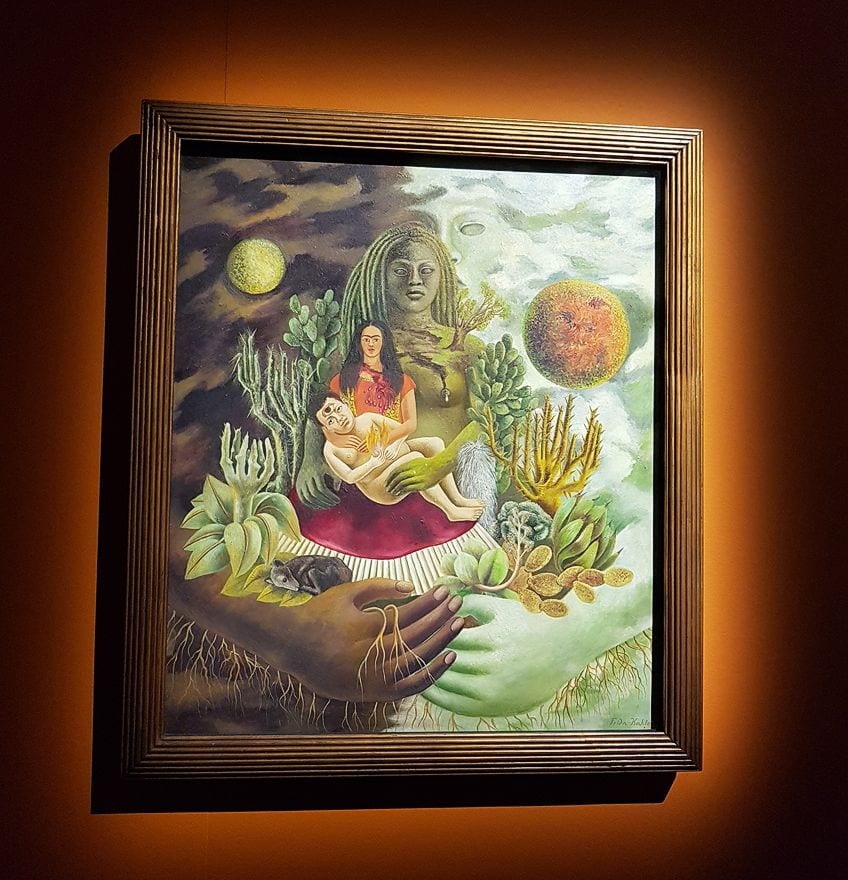
An important concept that many Surrealist artists considered, Kahlo in particular, was the question: “what is woman?” However, unlike other artists, Kahlo managed to deeply explore this concept, being one of the few women practicing Surrealism. She altered the meaning of maternal subjectivity in her artworks through her depictions of her miscarriages, as she wondered how the absence of motherhood impacted the female identity.
Kahlo existed as an important female role model not only within the Surrealist movement but in Modern Art in general. Her portrayals of pain and frustration took crucial steps in opening up the minds of other artists, as women who attempted to communicate wild and deep emotions prior to Kahlo were labeled as hysterical or insane, while men were just thought to be melancholy.
Along with her ideas, Kahlo’s iconic face proves to be everlasting within the art world, demonstrating that she is an influence not to be underestimated.
Dorothea Tanning (1910 – 2012)
Another female artist practicing in the Surrealist movement was the American Dorothea Tanning. In 1936, she was introduced to Surrealism through an exhibition that took place at the Museum of Modern Art in New York and began to experiment within this movement shortly after. Her most well-known Surrealist paintings include Birthday (1942) and Eine Kleine Nachtmusik (1943).
Tanning’s paintings typically made reference to her dreams, which she viewed as indicating deeper truths, which allowed for a potential psychological rebirth. Like other Surrealist artists, Tanning depicted illustrations of dreams in such a way that they spoke directly to the psychology behind them. This was because Tanning was particularly interested in the unconscious of an individual within a single dream. Thus, she went on to depict at least one figure within her paintings with their eyes closed, in reference to this concept.
What made Tanning’s works so remarkable was that she was a self-taught artist included amongst some of the great Surrealist artists of all time.
Throughout her lengthy career that spanned more than six decades, Tanning had became well-versed in her own individual style. This eventually allowed her to move past Surrealism and into works that were more abstract and sculptural.
Tanning married fellow Surrealist painter Max Ernst after he became captivated with her iconic self-portrait, Birthday. After Ernst’s death, Tanning turned away from art and began to focus on writing and publishing, which she did until her death at age 101.
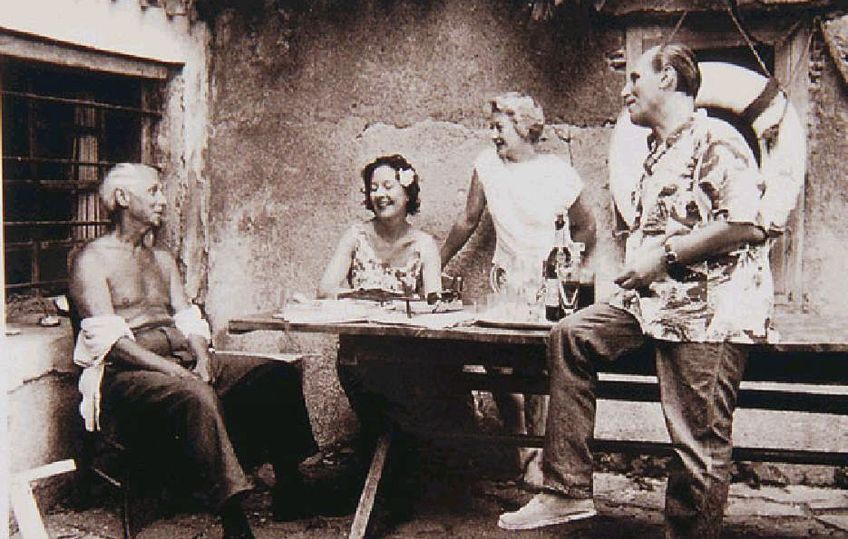
Leonora Carrington (1917 – 2011)
The last Surreal artist on our list is British-born Mexican artist Leonora Carrington, who was another important female artist within the Surrealism period. Up until 2011, Carrington was one of the last surviving participants from the Surrealist movement of the 1930s. Her most influential Surrealist artworks include Self-Portrait (Inn of the Dawn Horse) (1937 – 1938) and Ulu’s Pants (1952).
An artist of remarkable individuality, Carrington was known for her exploration of female sensitivity and aspects of female sexuality in her Surrealist artworks. However, despite being an artist in her own right, her association with Surrealism was often overshadowed by her affair with Max Ernst, which stripped Carrington of the respect that was given to other Surrealism artists.
Still displaying an interest in the unconscious mind and dream imagery, Carrington moved beyond the idea of women as sources of inspiration and focused her artworks on issues of the supernatural. Carrington began to depict fantastical creatures in her works centered around the occult, along with these of metamorphosis, identity, and magic.
What made her artworks so interesting was that she never displayed a fascination with Sigmund Freud’s writings and theories, unlike other Surrealist artists. However, despite this difference, Carrington’s works were identified and compared to other works within Surrealism, making her paintings an important contribution to the movement.
Modern Day Surrealism Artists
Unfortunately, after the death of Leonora Carrington, none of the Surrealist artists who were so highly regarded during their height of fame remain. However, numerous contemporary artists exist, who are still practicing within and making use of Surrealist characteristics. Below we have listed two artists whose artworks can be followed today.
Khan Nova
French artist Mathieu Saunier, who goes by the pseudonym “Kahn Nova”, creates digital collages that are inspired by Surrealist collages. Kahn combines elements of past narrative with current conversations in order to explore the past and the future through a contemporary model.
Some of the juxtapositions created in his artworks include men and women dressed in vintage ski gear posing against the Great Pyramids of Egypt. If you are interested, you can follow his artwork on Instagram here.
Mark Ryden
Los Angeles artist Mark Ryden creates artworks that borrow elements from both the Pop Art and the Surrealism period. Ryden creates a fine line between fine art and pop culture within his subversive artworks.
Through this blending of techniques, Ryden has created an interesting style that effectively blurs the boundaries between high and low art. If you would like to stay up to date with this artist, you can also follow him on Instagram here.
The Surrealist period spanned a long time within the art world, with numerous artists subscribing to this style of art. While we have only listed the top 10 most famous Surrealist artists to emerge from the movement, many other famous Surrealists exist. If you are interested in learning more about the other artists who helped define Surrealism, we encourage you to research further.
Take a look at our famous Surrealist artists webstory here!
Isabella studied at the University of Cape Town in South Africa and graduated with a Bachelor of Arts majoring in English Literature & Language and Psychology. Throughout her undergraduate years, she took Art History as an additional subject and absolutely loved it. Building on from her art history knowledge that began in high school, art has always been a particular area of fascination for her. From learning about artworks previously unknown to her, or sharpening her existing understanding of specific works, the ability to continue learning within this interesting sphere excites her greatly.
Her focal points of interest in art history encompass profiling specific artists and art movements, as it is these areas where she is able to really dig deep into the rich narrative of the art world. Additionally, she particularly enjoys exploring the different artistic styles of the 20th century, as well as the important impact that female artists have had on the development of art history.
Learn more about Isabella Meyer and the Art in Context Team.
Cite this Article
Isabella, Meyer, “Surrealist Artists – A Look at the Most Famous Surrealist Painters.” Art in Context. May 3, 2021. URL: https://artincontext.org/surrealist-artists/
Meyer, I. (2021, 3 May). Surrealist Artists – A Look at the Most Famous Surrealist Painters. Art in Context. https://artincontext.org/surrealist-artists/
Meyer, Isabella. “Surrealist Artists – A Look at the Most Famous Surrealist Painters.” Art in Context, May 3, 2021. https://artincontext.org/surrealist-artists/.


